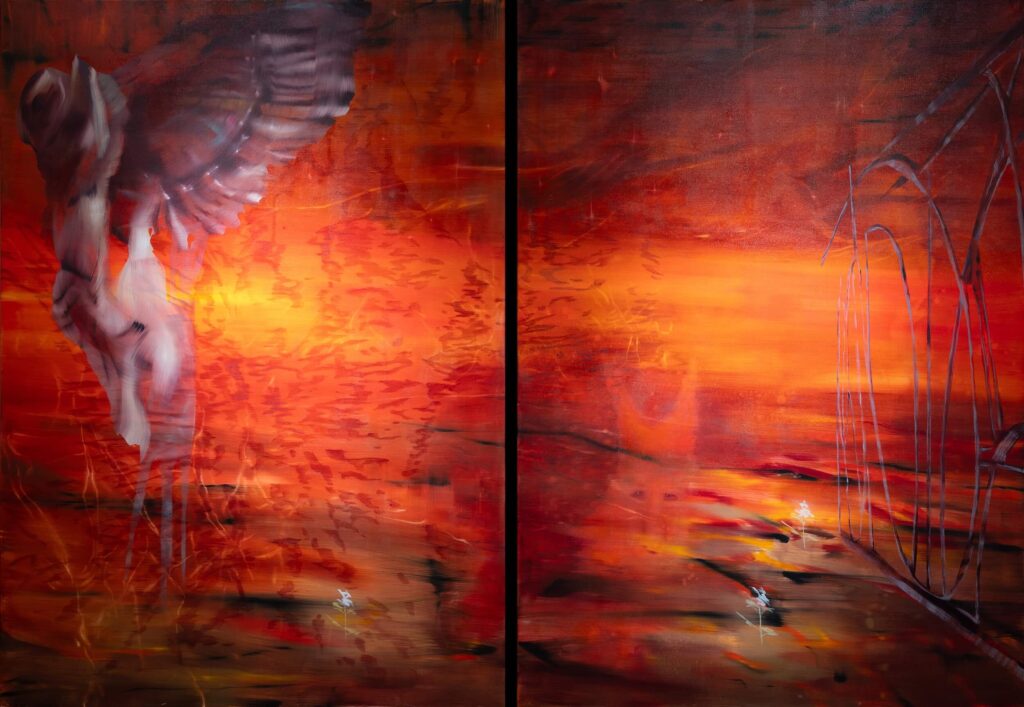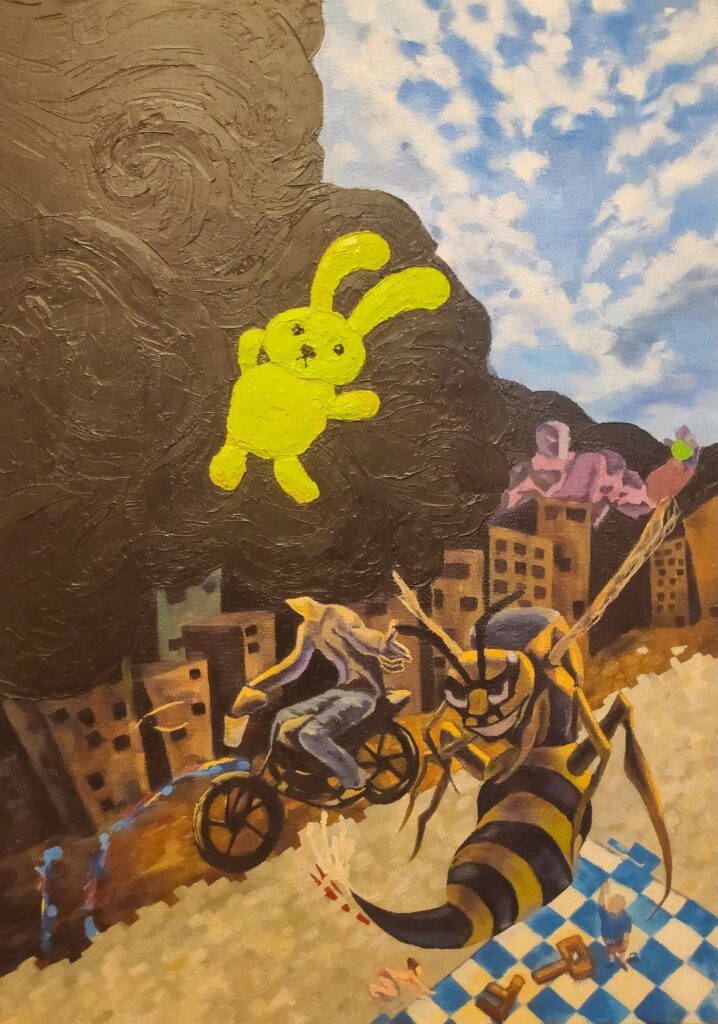2025 Finalists
Aurelija Zaburaitė ( b. 2002 / LT)
Colony of Workers
150 × 200 cm / oil on canvas / 2024
I order a wooden frame from a craftsman. When I receive it, I assemble four individual sticks together, until they tighten under the influence of each other – the structure resembles a detail of the frame of a house under construction. Later, I tightly stretch the frame with canvas. The threads of the fabric running along it evenly surround the perimeter defined by the wood. In that way I make a new object again, and it will become part of the pile of completed works, a new dash in the ever-growing pile of wood grooves.
A wood groove is a layer of wood visible in the cross-section of a tree trunk that shows its growth over the years. I pay attention to them every time I receive my wooden frame. This particular rhythm of parallel lines is repeated in the fields plowed by farm gadgets, and in the landscape, where the lines of the horizon, water level, the beginning of a field, and the road horizontals line up on top of each other. Separate pages lie together lengthwise on the sides of books. A neat musical stave, a barcode contains a code, information. At first glance, a flat surface remains just a flat surface, but within it contains the possibility of decoding, just a sight is needed. A barcode can be scanned, books can be read, wood grooves can be counted. While painting grooves, I mixed different paints, drew lines one after the other from top to bottom, arranged stroke after stroke, until they formed a flat area. New work will become a part of a pile of works from wooden frames leaning against the wall, growing over the years and will be filled with fresh strips of canvas sides again and again. Sometimes I want to compress such an accumulated collection of works, arrange them neatly, see how side of it looks and whether it can provide aesthetic value. In such arrangement, separate codings as different works will be hidden.
A “Colony of Workers” has settled on cotton and a thick wooden frame. The entire territory of the painting is surrounded by wooden figures, little figurines, gathered in the center and surrounding the perimeter of the canvas on the sides – they are builders, creators, loggers, but also manufacturers, recreating their environment, turning trees into a structure. Having taken over the functions of a mechanical body, they perform work that has its own order, time, and composite elements. The desire to line up neatly can become a way to communicate, to understand – in this way, the complex becomes harmonious and understandable. Certain planned and unitedly decided things can be relied on as a scheme. After completing the work according to this order, others who understand the template will have no doubts. Stretching the canvas, preparing it with gelatin and primer, paintings of quadrilateral shapes on a wooden base – these are ingrained, conventional and constantly reviving rituals of mutual work.
(24/25)


